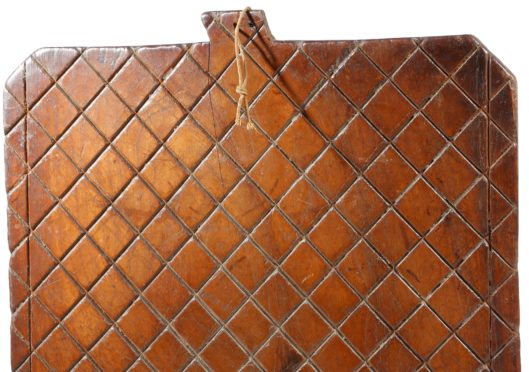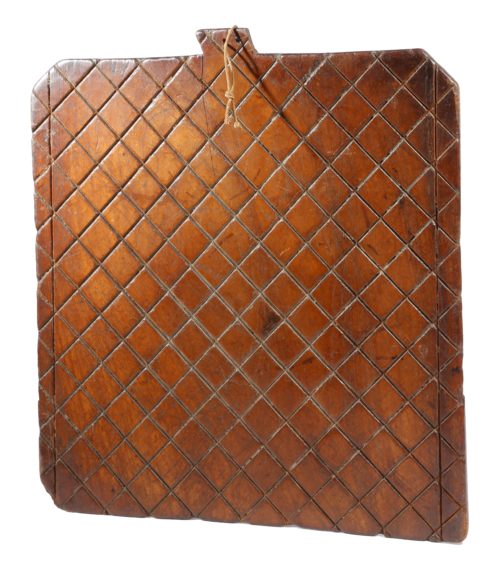It doesn’t matter how many years I spend on this column, objects keep coming along which leave me bamboozled – and today’s item comfortably left me floundering.
This hot water bottle in wood appeared at Woolley & Wallis in Wiltshire on January 9.
It was some age, too, as the auctioneers eased my ignorance by pointing out that it was, in fact, a Regency riddleboard, crafted in walnut some 200 years ago, with a shaped handle and an all-over diamond pattern.
Riddleboards were used in Scotland and the North of England for making oatbread or oatcakes. Oatbread was also known as haver or riddle bread.
They were also called riddling boards and I believe the term for the design is ‘scratch carved.’ The hole on the handle allowed them to be hung when not in use. Doesn’t it have a beautiful colour?
A thrashing and dressing machine demonstrated at the International Exhibition of 1862 showed how grain could be separated from stalks by using a riddle board. A shaking process led to the corn falling on to the board and passing along its channels into storage, while the straws passed over and were conveyed away.
The Woolley & Wallis board ‘wood’ appeal to the army of treen collectors – those who love the style, shapes and patina of small domestic objects made from wood. At one time, of course, before the introduction of pewter, silver and other metals, many household objects were carved from wood.
In 2010, the same auction house took £420 for an earlier George III mahogany riddleboard.
This time, they pitched the 20in x 18in board at a conservative £150-£250. To no-one’s surprise, it took a bid of £450 to secure its next home.











